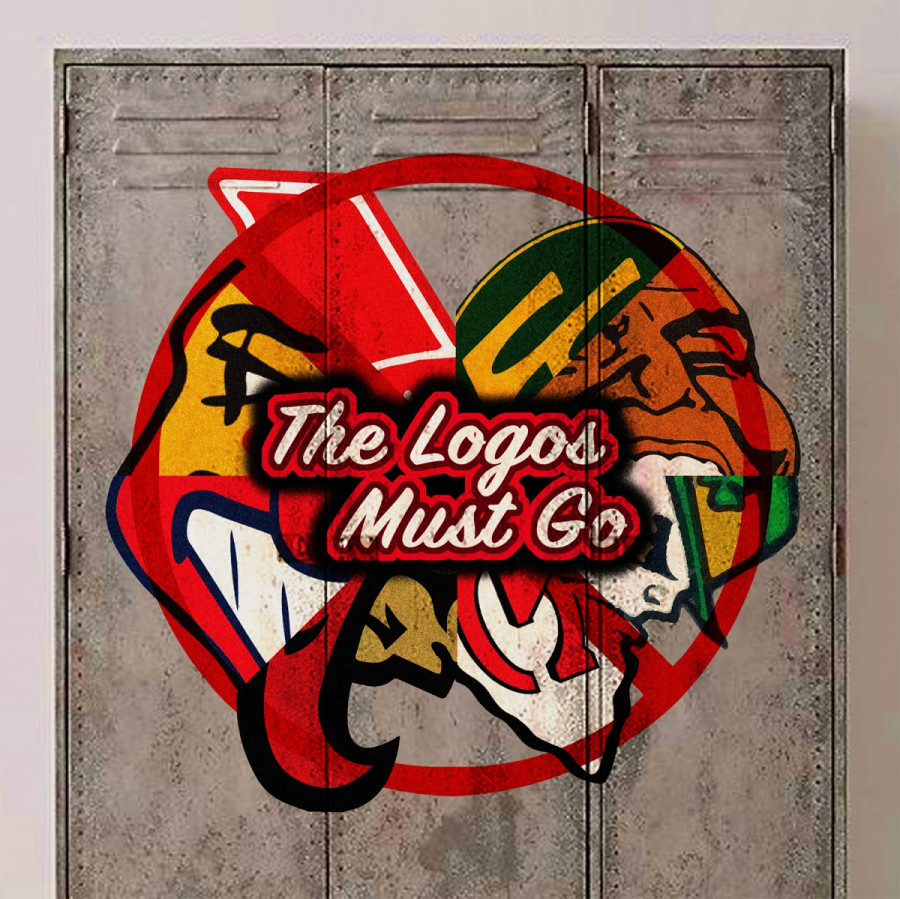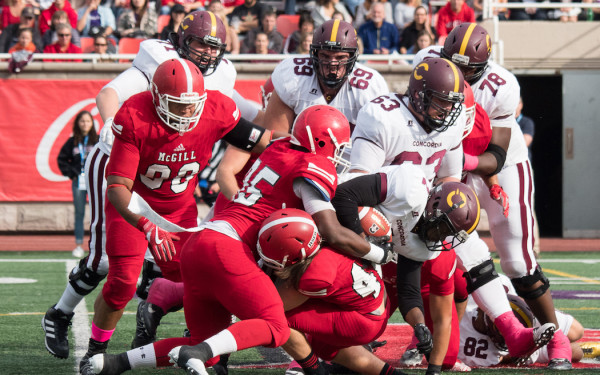Indigenous Imagery and Sports: It’s Time For Change
Acknowledging the Derogatory and Racist Imagery Outside Washington and Cleveland
The topic of the McGill Redmen’s team name, and the call to change it, has come up recently as part of ongoing struggles to eliminate negative stereotyping and derogatory team names of Indigenous people across sports.
Besides the elimination of Chief Wahoo as the everyday logo of Cleveland’s Major League Baseball team at the end of this season (who will still appear on merchandise readily available and sold directly by the team), not much progress has been made on that front as of yet in the major leagues or otherwise. And that’s just from the teams in the limelight of negative public opinion.
Besides the teams who have caused large amounts of public backlash, many other teams—either because they play in smaller leagues or because their names and logos aren’t seen as evidently caricatural of Indigenous people or culture by some people—aren’t mentioned as much as teams like Cleveland’s Major League Baseball team or Washington’s National Football League team. Canadians don’t have to look far to find examples of racist Indigenous imagery outside the Big Four; as mentioned before, McGill’s name carries negative racial connotations. We can see it in their own history; between 1982 and 1992, the hockey and football teams featured an Indigenous man in a headdress as part of their logo. Before that, derogatory terms to describe McGill teams were used interchangeably in the 1960s.
Canadian major junior hockey is particularly guilty of using stereotypical Indigenous names and imagery for their team names. The Western Hockey League, one of three leagues under the jurisdiction of the Canadian Hockey League, only has 22 teams. Yet, three different teams have names making use of Indigenous stereotypes and all three even make use of headdresses as part of their logos; the Portland Winterhawks (a very slightly modified version of Chicago’s current NHL logo), the Moose Jaw Warriors (a red silhouette of an Indigenous man in full headdress), and the Spokane Chiefs (a giant S with headdress feathers). A fourth, the Seattle Thunderbirds, make use of an element of Indigenous mythology in their name and logo.
Closer to home, Quebec’s Major Junior Hockey League has the Shawinigan Cataractes. A cataract is, in this usage, a very large waterfall, and the team was named in 1978 after the nearby Shawinigan Falls.
If their team is named after a waterfall, why do they have an angry Indigenous man as their logo? Or a smiling googly eyed Indigenous mascot named, of all things, THOMAS HAWK? What baffles me even more, isn’t even the choice of logo itself, even if the name has so little to do with the name of the team, it’s the fact that they started using an Indigenous caricature as a logo in 199-fucking 8. Worse still, the Cataractes updated their logo in 2008, going from an old-school interpretation of the Indigenous caricature to a ‘’graphic novel’’ look that further puts the emphasis on aggressivity. Aggressiveness is a big part of the stereotyping of Indigenous people in sports; it’s why so many teams are named “Chiefs,” “Braves,” or “Warriors.” Despite all of this, besides a little negative buzz from when the Cataractes hosted the Memorial Cup in 2012, as well as a particularly out of touch media campaign in 2015 that painted white Cataractes players in blue and gold warpaint, the Cataractes logo has largely not been talked about in the mainstream press.
The Canadian Football League isn’t immune to this either, as Edmonton’s team currently uses what is now considered a derogatory term towards Inuit people as its true team name, and it has done so since 1949, further showing just how outdated names like Edmonton’s are. Like other teams who continue to use Indigenous names and images, yet aren’t the target of negative public opinion, Edmonton doesn’t use overt stereotyping as part of their team image (their logo is simply two Es, and their mascots include Punter, a giant football, and Nanook, a polar bear. Nanook is the Inuit name for the ‘’master of the bears’’ in Inuit tradition). This, combined with the lack of screen time and knowledge the CFL has outside of Canada, has allowed Edmonton and the CFL to get away with the usage of an outdated and derogatory slur as the name of it’s football team. Perhaps due to this lack of exposure, pressure by Inuit groups to change the name has yet to have had any concrete effects.
It’s amazing to me that considering how often teams that don’t use Indigenous names, symbols, or mascots as part of their team identities rebrand, teams that do stand so firmly behind the usage of these caricatures. The Laval Rocket, the Montreal Canadiens’ minor league farm team, has changed names four times since 2002, and none of them were slurs or derogatory. And you expect me to believe changing the racist name of a minor league hockey team is too hard?
At the end of the day, as much as Washington and Cleveland’s racist names and imagery are talked about and scrutinized (and rightfully so), smaller teams in smaller leagues across Canada and the United States are getting away with the usage of racist and derogatory imaging despite their names and logos being no better than what these higher profile teams are using. If at least McGill changes it’s team name, that will be a small step in the right direction.


_600_832_s.png)

1_600_375_90_s_c1.jpg)

__600_375_90_s_c1.jpg)
.jpg_600_375_90_s_c1.jpg)